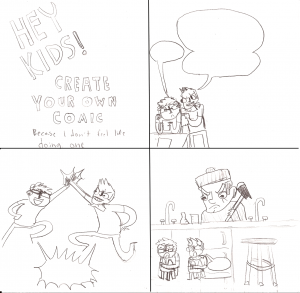Whether I’m casually clicking my way through a Facebook profile of someone who, let’s be honest, I’ve never met before, or trying to figure out what the correct reagent is for my organic chemistry homework, you can bet that I’ll have to refresh the internet at least five times in the hour.
This is a serious BishopNet problem. Some people may still consider the internet to be a luxury we all need to stop obsessing over, but to us college students, the internet is a necessity. Half of my homework has to be completed online or I have to get assignments off of Blackboard.
Not to mention the fact that my world will literally shut down if I can’t read or send emails successfully at any given moment of the day. The internet at Ohio Wesleyan has never been perfect, and I don’t expect it to be. But we aren’t a very big school, and I would hope that we could manage to have a network that can process 2,000 internet connections if OSU up the road has a million connections.
That may have been an exaggeration, but it’s still a problem. Having the internet crash on you while watching the newest “Grey’s Anatomy” sucks, but having it crash as you’re filling out a grad school application – debilitating.
The last two and a half years I’ve been on campus, BishopNet has gone from a slight annoyance to a connection that barely exists.
My knowledge of servers and networks is slim to none, but I can’t bear to think of another semester living in fear of the unpredictable connection.
A student working in the OWU network control center explained to me that the problem has been ongoing and things have been worked on, but the efforts to fix the slow connections and trips have apparently not helped the situation.
Perhaps we need to invest in more servers, or devote more time to the situation, because whatever work is being done, clearly is to no avail. Not only do students rely on the internet, but most of the professors, faculty and staff have to use BishopNet to accomplish normal, daily tasks. With a dysfunctional internet, the time it takes to do these tasks increases, and then nothing gets done on time or at least not without frustration. The only time BishopNet problems are o.k., is when they are describing OWU students’ mutual understanding of Thursday morning struggles.
Otherwise, we need some serious internet connection help.
Emily Hostetler
Transcript Reporter












